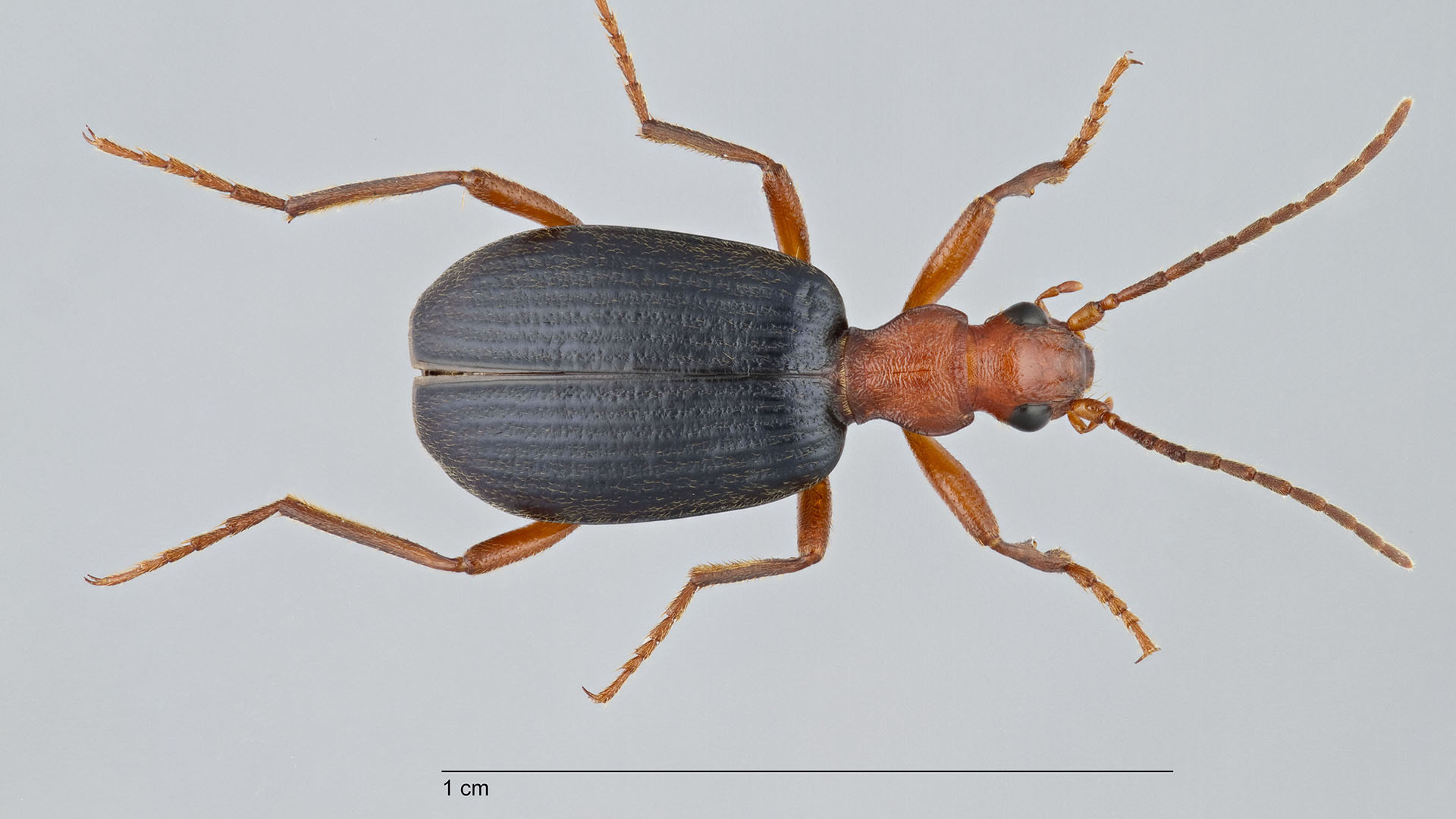 Bombardier beetle (Brachinus elonatulus) dorsal view.
Bombardier beetle (Brachinus elonatulus) dorsal view.
A Sonoran Desert insect with a toxic defense mechanism is a candidate for having the world’s most interesting genome. A University of Arizona researcher is campaigning for it to win that distinction by an online vote.
The nearly half-inch bombardier beetle is native to Sonoran Desert riparian habitats. What sets it apart is its self-preservation mechanism – a boiling hot chemical cocktail that the beetle spews from its abdomen directly at predators such as frogs.
UA entomologist Wendy Moore studies the critter, which lives in Madera Canyon south of Tucson. While many beetles have chemical defenses, Moore says the temperature of the chemicals sprayed — higher than the water boiling point of 212 degrees Fahrenheit – is unique to this species.
“By having the genome of the bombardier beetle, it would be the very first genome for this huge family of carabids where there is 40,000 described species,” Moore said.
Now isn't the time to lose steam! VOTE for Bombardier Beetle that sprays hot H2O vapor+quinones! @PacBio #SMRTgrant: https://t.co/eHLOnPNf2E pic.twitter.com/KziSWbSiXG
— Tanya Renner (@TanzRenner) March 23, 2017
The bombardier beetle is one of five fauna vying for top prize in a genome sequencing competition. It’s up against a dancing dingo, pink pigeon, sea slug and pit viper.
Moore is campaigning for her beetle to win the competition because "these smaller organisms are by far the most diverse in the world and have a lot of mysteries that we need to unravel."
You can cast a vote through April 5 for the bombardier beetle to win the genetic sequencing.
The team started a social media campaign to rally support behind the beetle's bid for genetic scrutiny, using the hashtag #SeqtheBeetle. Those hoping to win the competition are also using the hashtag #SMRTgrant.
Listen to Wendy Moore talk about how the beetle's chemical reaction occurs:


By submitting your comments, you hereby give AZPM the right to post your comments and potentially use them in any other form of media operated by this institution.